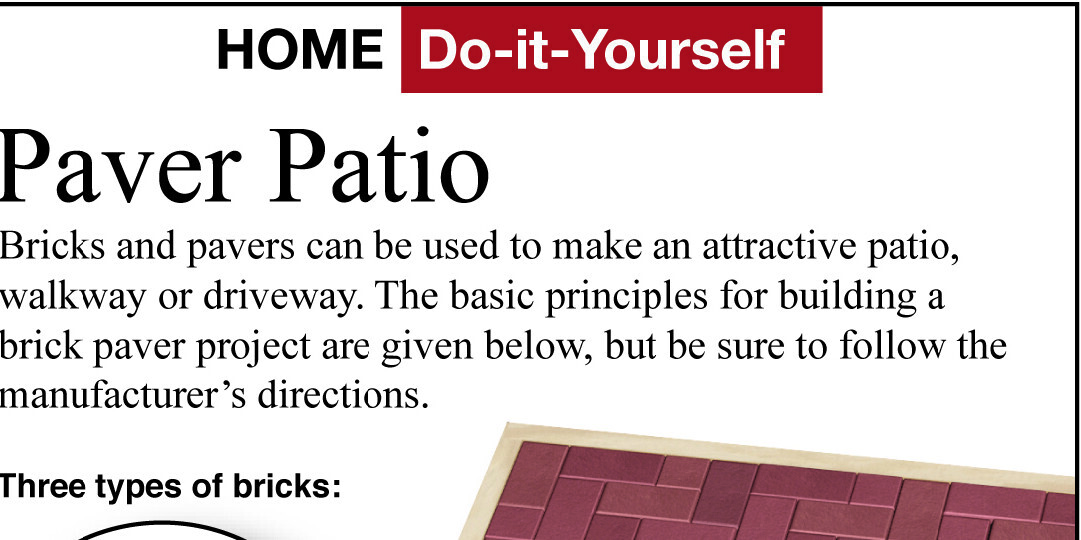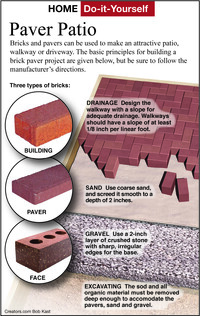Dear James: I’m planning to install a decorative brick path around my muddy flower beds. Is this a common DIY task, or should I hire a contractor who uses mortar joints? — Glenn P.
Dear Glenn: Using different brick colors and finishes, brick pathways are not only attractive but also easy to put in place. The greatest advantage is that you can finish the project at your own speed. There’s no need to hurry through a stage or wait for extended periods while something dries. You can work at your own pace, as long as you’re okay with some clutter in your yard. However, in the end, the appearance of your new brick path will be well worth the temporary mess.
Brick paths can enhance your outdoor design by offering both practicality and visual appeal. Available in a wide range of colors, and allowing for distinctive patterns, bricks make it simple to improve the appearance of your landscape.
There are three kinds of bricks: paver, construction, and facing. Paver bricks are extremely durable. Producers create them for use without mortar in areas like walkways, driveways, and outdoor patios. These bricks are made from clay that is fired at a high temperature for an extended period.
Standard bricks, also known as common bricks, are the most cost-effective option among the three. They are ideal for pathways due to the wide range of sizes and colors available. Facing bricks are manufactured to ensure uniformity in color, size, and texture. These tend to be pricier compared to standard bricks. The typical brick has dimensions of 3 5/8″ x 2 1/4″ x 8″ and weighs approximately 4 pounds.
You have the option of laying bricks in either open or closed joints. As you won’t be using mortar, closed joints are recommended. The bricks are placed closely together. The simplest design to create with closed joints is a running bond pattern. This is the most frequently encountered pattern in brick walls and pathways. Two other designs are herringbone and basket weave. These are more challenging to install but offer a distinct look compared to the running bond pattern.
To determine the area of the path, first inform your supplier about the design you plan to use so that the materials can be accurately calculated. Construct the walkway to be at least 3 to 4 feet wide to allow two people to walk comfortably next to each other.
Dig a section that is approximately 5 inches deep and about 4 inches broader than the final path width. Use stakes and strings to outline the shape of your walkway. Place your edging, such as bricks or wood, along one side of the path, and use sand to adjust them to the desired height.
After completing the edging, flatten the base and place a PVC shield or weed block fabric as a barrier against weeds. Adjust each brick to be level by adding sand, using the edging as a reference. When the walkway’s width is finished, install the second edging. Finally, spread sand between the bricks and dampen it, doing this process three times.
Send your inquiries to Here’s How, 6906 Royalgreen Dr., Cincinnati, Ohio, 45244 or go to their websitewww.dulley.com. To learn more about James Dulley and read articles by other Syndicate writers and cartoonists, visit the Syndicate website atwww..
Follow on MSN for additional exclusive material
Related Headlines








